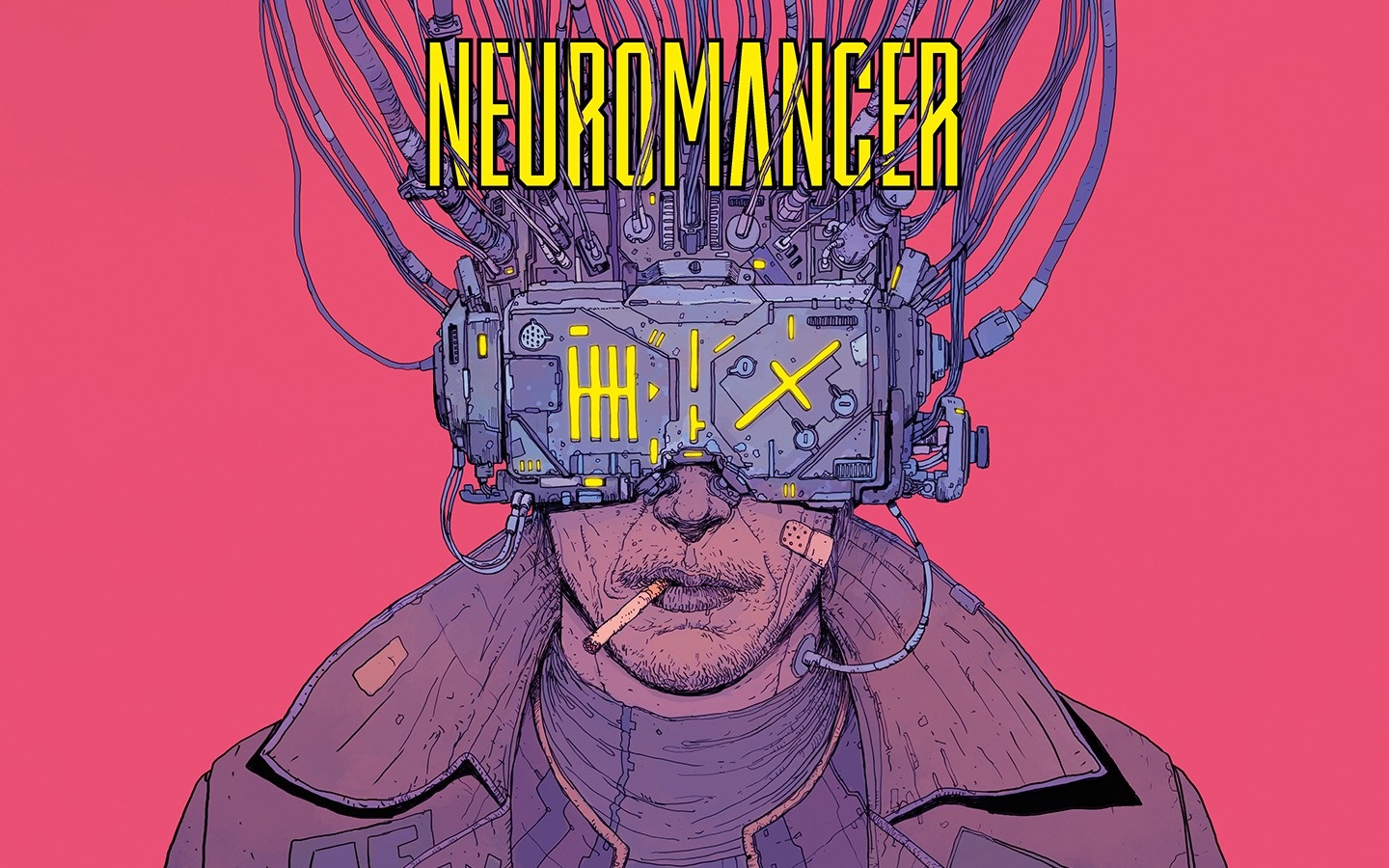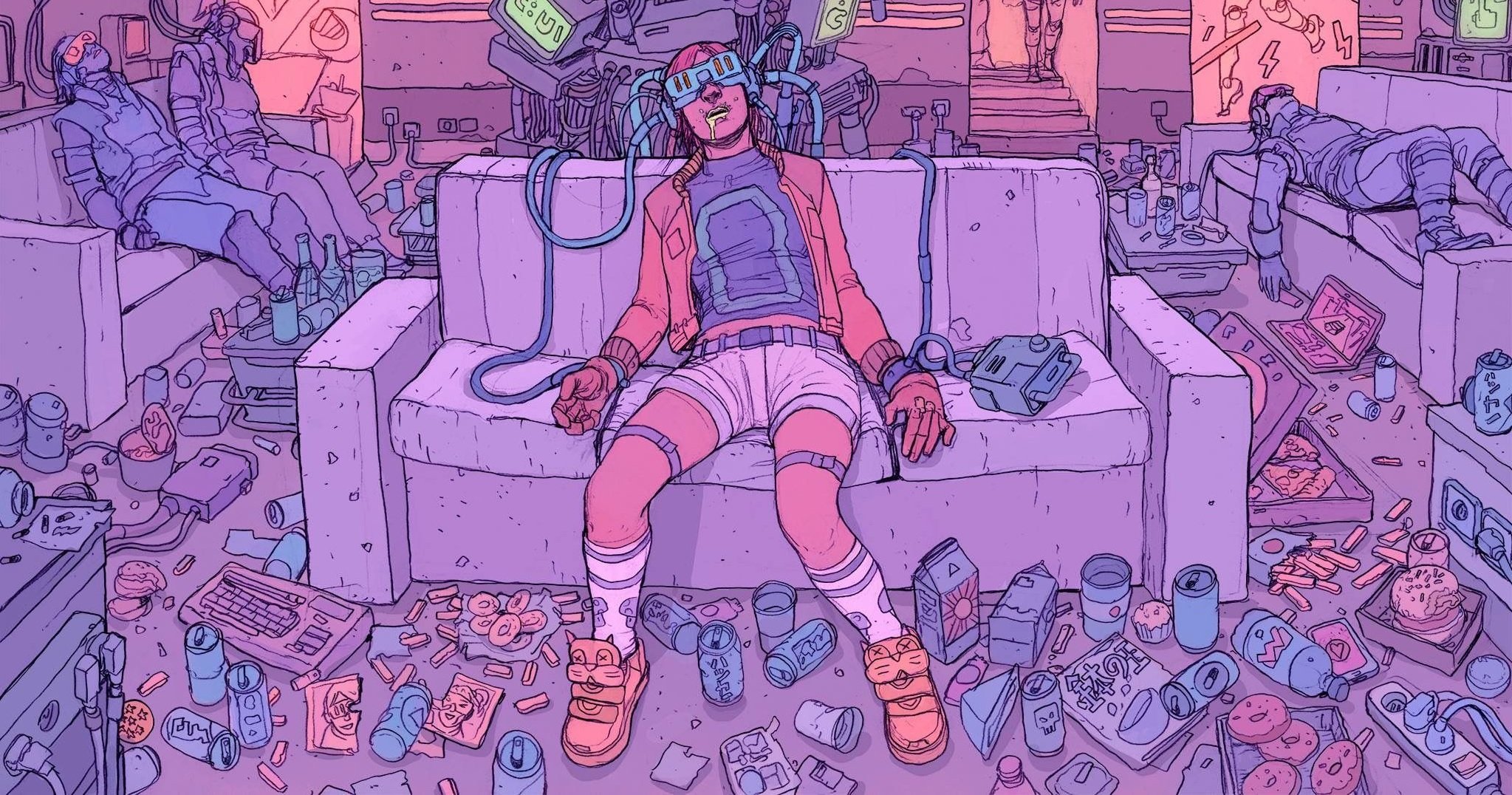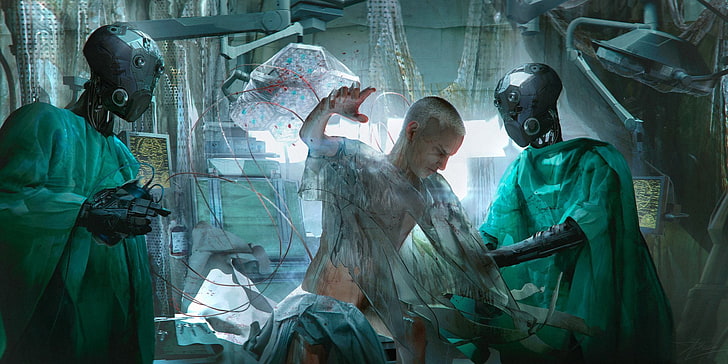
The sky above the port: Neuromancer as predictive fiction
In the first cyberpunk novel - "Neuromante" by William Gibson - there are already all the main features of the genre perception of society in the near future. High technology and prosthetics are mixed with poverty and crime, and multiculturalism with chaos in society and minds. While artificial intelligence is looking for a path to God, and corporations can hardly be distinguished from street bandits, while cyberspace becomes the new abode of humanity, the planet is dying in the fire of wars and environmental disasters. The world has long died, but in spite of everything it continues to live.

Gibson's Impressionist painting mingles all the fears and tendencies of 1984's Reagan America. This is primarily the story of that time, not the future in which we live.
Nevertheless, the Neuromancer still positions itself as a close-range fantasy - through the tendencies of modern society, the novel tries to predict where it might come. In this sense, he is related to the classic dystopia, sometimes leading to the absurdity of the tendencies of the society in which the author lives. Dystopia demonstrates how dangerous this or that path of mankind is. Similarly, Gibson, looking at the world of 1984, tried to see the future for several decades ahead. For the author, this is the world in which we now live. Did the founder of the genre manage to see our time?
High Tech [?]
Speaking about Neuromancer technologies, it is important to emphasize that despite their abundance, the novel definitely does not aim to realistically show the mechanisms of cyber prosthetics and computer systems. Heroes constantly juggle terms - they just do it for show. Accordingly, the realism of these technologies is itself controversial.
For example, the author clearly overestimated the possibilities of cyber prosthetics - the streets are not filled with professional cyborg killers with lenses instead of eyes (“Molly, I'm looking your way”). We didn't get holography either. The technology is still too expensive and complex for mass use. The same goes for cloning (only this time ethics is added to the list of problems).

Two specific novelties deserve special mention: space colonies and cyberspace itself. Unusually for cyberpunk, much of Neuromancer, including the climax, takes place in space. There, in the face of the possessions of the depraved Tessier-Eshpool family, we see an orbiting city with artificial gravity. It was assumed that such colonies at Langrange points would be home to space colonists. Since then, the idea has been criticized more than once, largely due to technical problems associated with the construction and maintenance of such a structure, and the colonization of space itself is still financially disadvantageous.
If Neuromancer's blunder in predicting the imminent colonization of space can be traced in other science fiction, then cyberspace is a unique feature of cyberpunk. For the author, cyberspace is more of a magical and romantic place, and not a familiar routine, therefore it is rather pointless to argue with the realism of the picture - it is not here. Gibson describes cyberspace as a “consensus hallucination,” a visualization of data stored on servers around the world. Hackers here appear as researchers, cowboys and even travelers, whose images break the "ice" of corporate vaults.
For the sake of this romantic image "Neuromancer" sacrifices to a large extent reality (as it turned out, for the sake of connecting to the Internet, you do not need to connect wires to your head and create virtual worlds). But this view misses another problem: the romanticization of cyberspace misses how commonplace we perceive the Internet today.

The "Neuromancer" makes technological blunders in many places. Somewhere the author was too optimistic, somewhere on the contrary slipped a pessimistic look. However, technological precision was never required from the book. “Neuromancer” is, first of all, a story about people. Let's take a look at the cyberpunk society.
Low [?] Life
Like other social works throughout the history of fiction, Gibson drew inspiration for his picture of the world from what was happening around him. Much of the Western world of the first half of the eighties migrated into the gloomy picture of the near future: the growth of Japan and the Asian Tigers, the diminishing role of the state and the flourishing of the free market in time with Reaganomics and Thatcherism, unemployment and uncontrolled crime, the rooting of transnational corporations fueled by globalization, an already noticeable environmental crisis. Finally, all the same technologies that, with all their capabilities, have not solved a single problem of humanity. Plague, war, hunger and death still remain companions of people.

Of course, the trained eye will quickly see outdated details in the Neuromancer. First of all, this is the role of the state: for example, in Gibson's world, its importance is replaced by the market and globalization. In general, the role of the government and the country's borders is extremely small in the book. In reality, everything turned out to be more interesting: transnational corporations turned out to be more profitable to cooperate with the state than to replace it - as in the USA, Japan and Korea. Moreover, the opposite trend is visible: the growth of state capitalism, when state-owned enterprises take part in a market economy (for example, this is typical for China). Another phenomenon of the era, along with the rise of the economy, was the growth of crime.
With all this, “Neuromancer” is right in one of its central themes: the chaos of the globalized world. The world of Keyes, Molly and Armitage is a world without history, but not in the sense that there is none. On the contrary, the Neuromancer universe knew a lot: technological breakthroughs, world wars with the use of AI and nuclear weapons, world-class pandemics. The reader learns about it piece by piece: through phrases from dialogues, a stuffed animal of an extinct horse in the Turkish market, through the character's memories (childhood in the wastelands of a German city destroyed by a nuclear explosion). These details are countless, so many that in the end, the canvas of history becomes incoherent. This world has no history, not because it does not exist. This is a world without history because there is too much of it. And here we come to the main and most disturbing prediction of Gibson about the way people think.
Postmodern victims
One of the most common messages of cyberpunk and sci-fi works of similar technological skepticism is the denial of the improvement of human nature with the development of technology. Contrary to classical ideas of modernization, people do not become more highly moral if they are given access to the Internet. The same can be said about society. Technology is only a tool. Cyberpunk is naturally skeptical about the positive role of technology.

Let's look at the characters of "Neuromancer". Everyone here, including the protagonist Henry Keyes, is not in any way spiritualized people. They are primarily concerned about survival, many are sociopaths, manipulators or drug addicts. However, their indifference frightens most of all: each has its own shallow and, in essence, nondescript life. Hardly anyone other than local AI is capable of long-term plans - most just exist. Why is that?

Heroes of "Neuromancer".
Let's return to one of the main themes of the novel and cyberpunk in general - chaos. The world of "Neuromancer" is at an extreme stage of globalization: the heroes of the novel have visited the Japanese Chiba, the East Coast of the United States, Istanbul, the USSR, Egypt and even in Earth orbit. The work mentions dozens of cultures and factions. This is a world in which hippies have created their own space station, and the hero, having been injured in Cairo, lies on the bottom in the Far East. A world full of possibilities that also lead to total chaos. And this is exactly the detail that makes the world of "Neuromancer" related to ours.

The heroes of the book fall prey to chaos. An overabundance of information leads to an overload of perception. What is the way out of this? Become indifferent to everything that does not concern you. This is Case's final choice. A good example is his reaction to the announcement of the freed AI about receiving an alien signal from Alpha Centauri. He doesn't give a damn. The signal, which in other works of fiction would have become the greatest discovery in human history and would have occupied the center of the plot, was ignored and forgotten. This does not concern him.
Conclusion: a laugh that was not a laugh
The Neuromancer was far from perfect in his predictions. He was unaware of many of today's technological innovations: smartphones, 3D printers, graphene, nanotechnology. On the contrary, he exaggerated the importance of others: space, AI, cyberspace. Not all things were guessed in the development of society. At the same time, it is amazing how Gibson managed to guess the main thing: people are lost in their own world, they are not able to follow the right path not because of lack of desire, but because they do not know which of the possible options is correct.
In the loss and indifference, in the chaos of this world, devoid of truth, in the overabundance of possible options - the main and most interesting, in my opinion, the prediction of "Neuromancer".
The author is Yegor Melnikov, specially for the xlebant project.